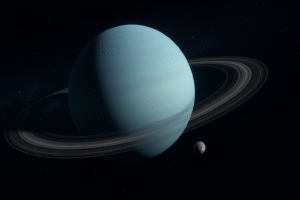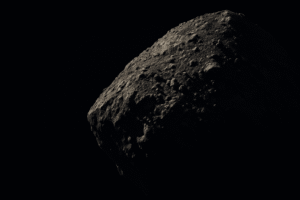Fun Fact: Ada Lovelace is often celebrated as the world’s first computer programmer, even before computers existed!
When you think about the origins of computer science, the name Ada Lovelace might not come to mind immediately—but it should. Born in 1815, Ada Lovelace was an English mathematician and writer whose visionary work laid the foundation for modern computing. Collaborating with Charles Babbage, the inventor of the Analytical Engine, Lovelace wrote what is widely recognized as the first algorithm designed for a machine. Let’s explore the extraordinary life of Ada Lovelace, a woman ahead of her time.
Early Life and Influences
Ada Lovelace was born to privilege and intellect as the daughter of the famous poet Lord Byron and Anne Isabella Milbanke, a mathematician. Her parents’ contrasting temperaments shaped her upbringing. While Lord Byron’s poetic flair inspired creativity, Lady Byron’s rigorous focus on mathematics provided Ada with a disciplined foundation.
Anecdote: Ada’s fascination with machines began early. As a child, she designed fanciful inventions, including a flying machine powered by steam. This imagination would later fuel her groundbreaking work with the Analytical Engine.
Collaboration with Charles Babbage
Ada Lovelace’s most significant professional relationship was with Charles Babbage, a mathematician and inventor. Babbage’s design for the Analytical Engine, an early mechanical computer, fascinated Lovelace. Recognizing the machine’s potential beyond mere number crunching, she envisioned it performing a wide range of tasks—a concept that was revolutionary for her time.
Key Contribution: In 1843, Lovelace translated an Italian paper on the Analytical Engine written by Luigi Federico Menabrea. However, she didn’t stop there. Lovelace added extensive notes, which were three times the length of the original article. These notes included:
- The First Algorithm: A detailed plan for how the Analytical Engine could calculate Bernoulli numbers.
- Visionary Insights: Lovelace predicted the machine’s potential to process not just numbers but also symbols, paving the way for modern computing.

A Vision Ahead of Her Time
Lovelace’s understanding of the Analytical Engine’s possibilities extended beyond mathematics. She foresaw a future where machines could create music, art, and even language, an idea that aligns closely with today’s artificial intelligence (AI).
Quote: “The Analytical Engine weaves algebraic patterns just as the Jacquard loom weaves flowers and leaves.” — Ada Lovelace
Case Study: Ada’s concept of machine versatility resonates in today’s world. For instance, modern computers use algorithms for everything from streaming music to generating art, reflecting her belief that machines could transcend calculations.
Overcoming Challenges
Despite her brilliance, Ada Lovelace faced societal and personal obstacles. In the male-dominated world of 19th-century science, her contributions were often dismissed or overlooked. Moreover, Lovelace’s health deteriorated due to chronic illness, and she passed away in 1852 at the age of 36.
Personal Struggles: Ada’s life was marked by struggles with societal expectations and personal adversity, including bouts of illness and financial difficulties. Yet, she persevered, driven by her insatiable curiosity and passion for knowledge.
https://www.youtube.com/watch?v=bgARamosIgA&pp=ygU4QWRhIExvdmVsYWNlIFRoZSBWaXNpb25hcnkgV2hvIFdyb3RlIHRoZSBGaXJzdCBBbGdvcml0aG0%3DLegacy and Modern Impact
Although largely unrecognized during her lifetime, Ada Lovelace’s work has since earned her a place among the pioneers of computer science. In 1980, the U.S. Department of Defense honoured her legacy by naming a programming language “Ada.”
Recognition:
- Ada Lovelace Day, celebrated annually in October, highlights the achievements of women in science, technology, engineering, and mathematics (STEM).
- Her notes on the Analytical Engine are now seen as the earliest documentation of computer programming.
Modern Relevance: Lovelace’s vision of machines as versatile tools laid the groundwork for today’s digital world. Her insights continue to inspire innovators in fields like AI, robotics, and computational science.
Conclusion
Ada Lovelace’s life is a story of brilliance, perseverance, and vision. She transformed an abstract concept into a tangible legacy that underpins modern computing. As we celebrate her contributions, we’re reminded of the importance of curiosity, creativity, and challenging societal norms. Ada’s story asks us to imagine: What innovations could we unlock if we dared to dream as she did?
Who inspires you to think differently about technology and its possibilities? Share your thoughts below!
Author’s Note:
Writing about Ada Lovelace has been an inspiring journey. Her story reminds us that curiosity and creativity are timeless tools for innovation. Let’s honour her legacy by continuing to push the boundaries of what’s possible.
G.C., Ecosociosphere contributor.
References and Further Reading:
- The Ada Lovelace Institute
- Biography: Ada Lovelace
- https://www.the-good-times.org/people-2/ada-lovelace-weaving-algebraic-patterns-like-looms-weave-flowers-and-leaves/
- Best Ada Lovelace Quotes: Inspirational Sayings by the First Computer Programmer. https://thatonerule.com/rule/ada-lovelace-quotes-epitome-of-inspiration-for-modern-science/





Comments
Hi my loved one I wish to say that this post is amazing nice written and include approximately all vital infos Id like to peer more posts like this